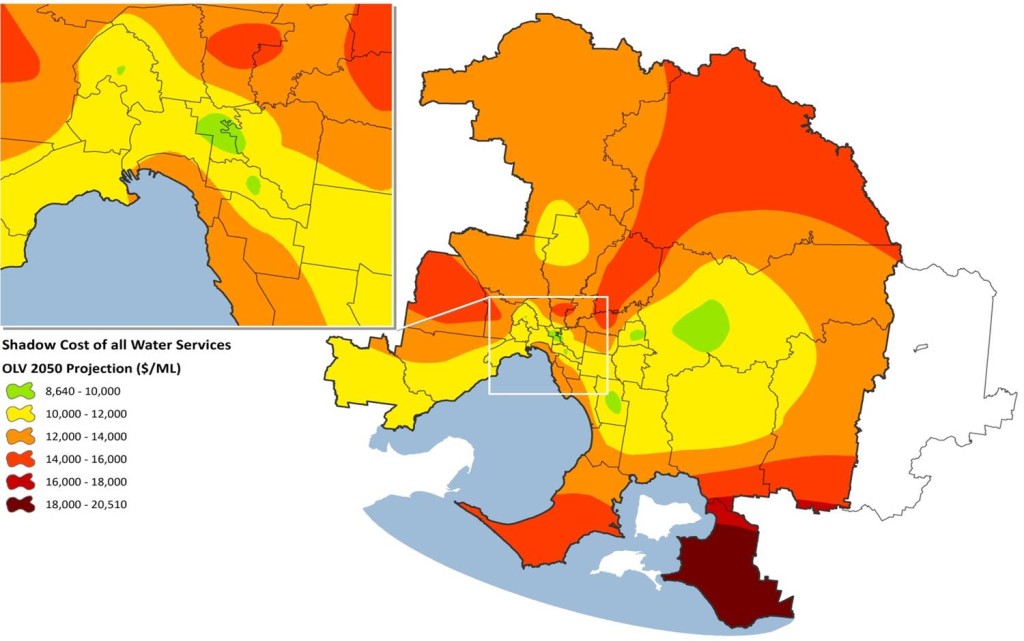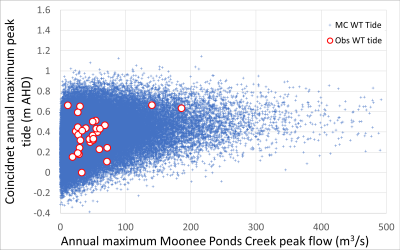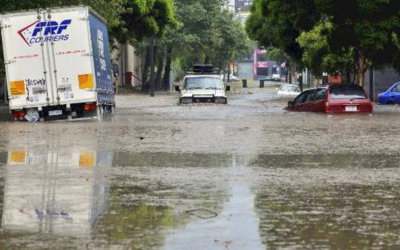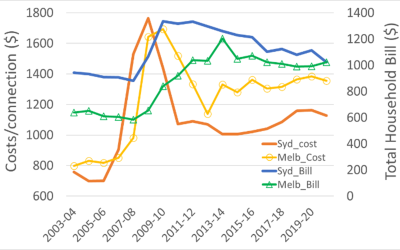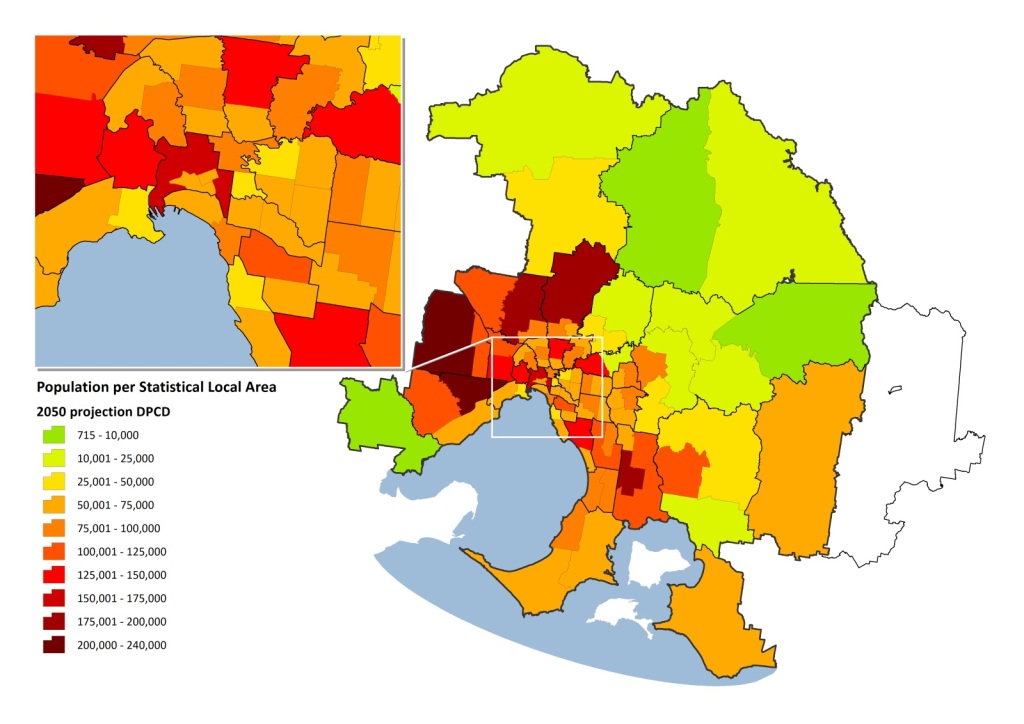
Boundary Conditions Paper published at WSUD2015 Conference
A combination of actions, strategies and solutions across multiple scale for water management avoided a disaster in our cities. Citizens reduced water use in cities by over 50% by changing behaviour, using rainwater, installing water efficient appliances and helpful response to government restrictions on water use. The urgency of drought also motivated collaboration and solutions across society – barriers to a range of water solutions were overcome by the seriousness of the drought. However, since the end of drought there has been a rush to dismiss most solutions within our cities in favour of water grids supplied by large scale water security infrastructure such as desalination and drinking wastewater. It seems that the water savings provided by our communities are banked by government and these savings are included in our future water resources planning but most of the solutions that created these changes in water use are no longer supported (for example programs supporting water efficient appliances and rainwater harvesting have been abandoned). The future demand profiles may be higher than assumed in water strategies. An example of this is provided in the above paper. Do we fully understand the economic and environmental costs of these policies?
Is this a wise strategy? It should be noted that the Queensland Audit Office investigated the performance of the South East Queensland Water Grid and found that the benefits of water grids were overstated and the costs were under-estimated. A partial counting of costs was highlighted. Moreover, genuine Systems Analysis is required to understand the performance of Water Grids – addition of water yields and partial costs from separate analysis will always over-estimate the water security outcomes and under-estimate the costs. These issues are highlighted in an range of publications by the author over the last decade and the Systems Framework concepts are presented in the following publication (for example):
Systems Framework Publication WSUD2015
A reality check: the full audited costs for the SEQ Water Grid with Desalination and the Western Recycling Scheme are greater than $32,301/ML. The actual audited operating costs are $3,248/ML for desalination, $4,419/ML for the Western Recycling Scheme and $781/ML for the water grid. The water grid costs are additional to the current costs of operating the local water supply network which are $3,257/ML for Queensland Urban Utilities (for example). Thus the total average cost of the planned water supply options for SEQ may be greater than $8,457/ML – this is $8.46/kL. However, using data from the Queensland Audit Office, this cost may be higher than $12/kL. Acceptance of a water grid was the only water supply solutions will lock Queenslanders into even more steep price rises for water supply.
The systems analysis of the SEQ water cycle and forensic analysis of all available audited data (see the above paper on Boundary Conditions for example) revealed that the region will experience highly variable costs to 2056. However, the average variable costs for water distribution was $972/ML, $2,656/ML for the water grid and $1,870/ML for operation of security infrastructure supplying the water grid. The variable operating costs are greater than $6,092/ML and the fixed proportion of operating costs were determined to be 27% or $2,253/ML of total operating costs of $8,345/ML. Note that the future capital costs are additional to these values. Importantly, this analysis assumed that the Queensland Government will continue to promote and incentivise use of water efficient appliances, rainwater harvesting and Water Sensitive Urban Design (WSUD). Withdrawal of support for integrated and local strategies will further increase costs to citizens.
But the environmental and climate change impacts are extreme with additional Greenhouse Gas Emissions for each ML of water grid supply is 3,300 kg – as such the whole of system Greenhouse Gas Emissions for water supply to properties in SEQ will be greater than 5,000 kg/ML. And the dismissal of solutions within urban areas such as water efficient appliances, rainwater and stormwater harvesting as a potential supplementary solutions also significantly increases the waterway and receiving water costs. It is likely that separate analysis of these alternatives has obscured the benefits of an integrated strategy. The importance of including stormwater harvesting in water cycle management and analysis at appropriate scales is highlighted in the following recent publication: Transitioning stormwater management WSUD2015 Conference
The same can be said for the Greater Melbourne region and Victoria. Moreover, the politics of the previous government realising that local and integrated strategies are needed for economics reasons seems to have further locked Victorians into a very high priced future. If we considered that the audited average operating costs of bulk water supply from Melbourne Water are greater $3,411/ML, greater than $2,704/ML for City West Water and operation of the desalination plant is likely to be greater than $3,250/ML. So the total average operating costs for Melbournians for sole reliance on a Water Grid supplied by desalination may be greater than $9,365/ML – this is greater than $9.37/kL.
But our work for the previous government revealed that the Greater Melbourne systems (see Systems Analysis of the Greater Melbourne region) included substantial cumulative costs (not average) to supply water to properties which drives a large variation in the operating costs of water supply – for example, the full water supply operating costs to the western and northern growth corridors expected to accommodate the population growth of Melbourne may be greater than $16/kL at some locations. The spatial distribution of water cycle costs to service Greater Melbourne to 2050 using business as usual strategies (real discount rate of 9%) is presented below. Note that this Figure represents all costs from 2010 to 2050 divided by all managed water cycle volumes (water supply, sewerage discharge and urban stormwater runoff).
Figure: Spatial costs of water cycle management for business as usual strategies to 2050
However, the diminishing support for water efficient appliances, rainwater harvesting, WSUD and integrated strategies will dramatically increase these costs. But the climate change and environment costs are far higher for Victoria with Greenhouse Gas Emissions of greater than 5,000 kg/ML – and exclusion of water efficiency, rainwater and stormwater harvesting (and real Water Sensitive Urban Design WSUD options in general) will dramatically increase nutrient loads to waterways and bays. The loss of urban amenity and waterway values will be significant. Importantly, the mooted supply of desalination water via a water grid to regional Victoria (at the exclusion of other solutions) may cost more than $20,000/ML to $50,000/ML to operate at substantial environmental and climate change impacts.
I am not sure that the states of Queensland and Victoria can afford to only include water grid solutions in the forward projections – the economic and environmental trade-offs are potentially massive! As the Greek Philosophers highlight “Qui Bono” – who benefits from this? If the policy decision is based on the argument to only allow free choice for all local solutions, the government should only be charging usage tariffs (no fixed charges) from their large scale monopoly supply to allow the beginnings of genuine choice of supply to consumers. Note that the usage charge in consumer water bills is only a proportion of the full costs of water supply. The fixed charges in water bills are a disincentive to water savings and local supplementary water supplies. The price signal is diminished – this is a missed opportunity.


